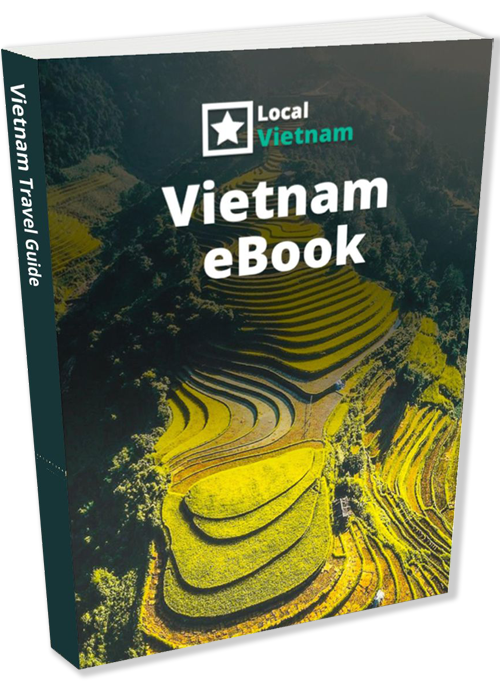Why do Vietnamese celebrate birthdays on the same day?
In traditional Vietnamese culture, everyone “ages” together on Tết, the Lunar New Year — a practice known as “Mừng Tuổi”, or “Happy Age.” Rather than marking individual birthdays, age is counted by how many New Years a person has lived through. That means a baby born the day before Tết technically turns two the next day.
This custom has deep roots in Confucian values, where age plays a key role in social hierarchy and respect. Knowing who is older helps define how people interact — from language use to table seating — and a person’s age often outweighs their exact birthdate in importance. Historically, most people in rural areas didn’t even know their real birthdays. Precise birth records were rare, and celebrating Tết as a collective milestone made practical sense.
Today, even though Vietnam uses the Western calendar for legal and personal purposes, Tết remains a symbolic birthday for many. It reflects a society that values community over individuality, and that sense of shared time still shapes how age and respect function in everyday life.
Traditional Vietnamese birthday milestones
In the past, Vietnamese families did not celebrate birthdays every year. Instead, two milestones were seen as truly significant: the first month (Đầy Tháng) and the first year (Thôi Nôi) of a child’s life. These marked survival through the most fragile stages of infancy — a major relief in times when infant mortality was high.
Beyond early childhood, birthdays were generally not celebrated until later in life, often around major milestones like age 70 or 80, when elders were honored with large family gatherings. These events focused less on the individual’s exact birthdate and more on respect, longevity, and the person’s place in the family and community.
Modern birthday celebrations in Vietnam
Today, Western-style birthday parties are increasingly common, especially in cities. For children, birthdays are often celebrated at school, with a parent bringing in cake, snacks, and sometimes gifts. One charming difference: it’s common for all the kids to take turns blowing out the candles, not just the birthday child.
For teenagers and adults, celebrations usually involve dinner at a local restaurant — hotpot or barbecue spots are popular — followed by karaoke or a café gathering. Unlike in the West, there’s little emphasis on decade birthdays like 30 or 40, and no cultural equivalent of “Sweet 16.”
Thanks to social media and global pop culture, younger generations are embracing more personalized and creative birthday celebrations, but the approach still tends to be casual, social, and family-oriented.
Birthday gift culture in Vietnam
Gift-giving in Vietnam is shaped by tradition, symbolism, and growing global influences. From family to business settings, knowing what to give — and how to give it — can say a lot about your respect and intentions. Here’s how birthday gift culture works across different age groups and relationships:
Children: Fun and practical
For younger kids, the usual gifts are toys, clothes, school supplies, or games. Practicality is often appreciated — something useful but still exciting. Birthday parties are simple, and other children don’t usually bring gifts, so anything given feels extra special.
Young women: Romantic and cute
Popular gifts for young women in Vietnam include flowers, perfume, jewelry, and plush toys like giant teddy bears — especially in romantic relationships. However, if you’re not a partner, gifts can still be meaningful without being overly personal. Safer choices include cute notebooks, stylish accessories, or a small item related to her hobbies. A modest bouquet with a card is also a respectful and appreciated gesture.
Young men: stylish or techy
Gadgets, fashion items like jackets or sneakers, watches, or headphones are common. While young men might not show outward excitement, they tend to appreciate gifts with cool or functional value.
Adults: Cash, food & drinks
For close family or spouses, cash is very common — and never considered rude. It’s often seen as more helpful and respectful. Other appreciated gifts include fine wine, imported food, and local specialties from one’s home region or travels.
Elders: High-quality and traditional
Elder family members are often given items with symbolic meaning — such as traditional clothing, herbal teas, fine fabrics, or meaningful gifts tied to health and longevity. High-quality and thoughtful matter more than flashy.
Superstitions and colors
Avoid unlucky gift colors (like black or white) unless you’re sure it’s appropriate. Colors tied to luck and prosperity — like red or gold — are safe bets. Fortune tellers may influence which colors someone considers lucky, especially among older or more traditional individuals.
Interesting facts around birthdays in Vietnam
Death Anniversaries: More Important Than Birthdays?
In traditional Vietnamese culture, a person’s death anniversary (Giỗ) is often more significant than their birthday. These events are intimate family gatherings where relatives honor the deceased by preparing their favorite foods, offering incense at home altars, and praying for peace and guidance. Rather than focusing on individual milestones like a birthday, this tradition reflects the Confucian value of filial piety — the lifelong duty to respect and care for one’s ancestors, even in the afterlife.
Lunar birthdays & fortune telling
While the Gregorian calendar is used for official birthdays, many Vietnamese still refer to their Lunar birthday — especially when consulting a fortune teller. These spiritual advisors use your birth date (as marked on the Lunar calendar) to predict key life events and offer guidance on marriage, buying property, career moves, or even health. In some families, your “spiritual birthday” may hold more weight than the one on your passport.
How to say “Happy Birthday” in Vietnamese
If you’re celebrating with Vietnamese friends, the standard phrase is:
Chúc mừng sinh nhật! (choop moong sin nyut)
It literally means “Congratulations on your birthday!” Other handy phrases include:
- Bạn bao nhiêu tuổi? – How old are you?
- Bạn đã trải qua bao nhiêu Tết? – How many Lunar New Years have you lived through?


